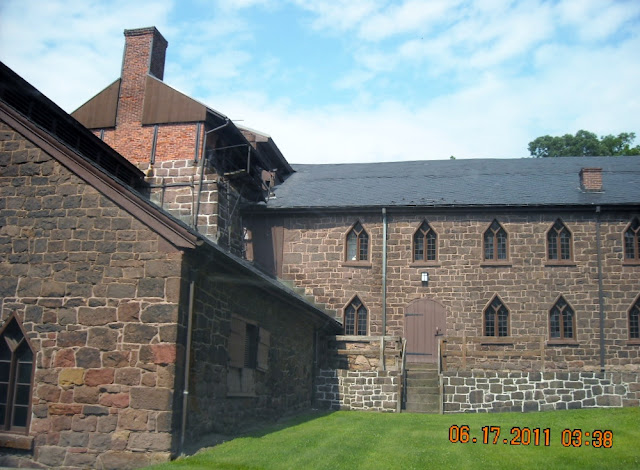While at the PA Dutch Country Campground, we decided to take a country drive on Hwy. 419 and 501. In a brochure, these roads were recommended as a scenic drive in Amish and Mennonite Country. While on the drive we stopped at a farmers store, on their property and got some tomatoes, new potato's, sugar peas, and a zucchini whoopie pie. The whoopie pie (alternatively called a gob, black-and-white, bob, or "BFO" for Big Fat Oreo) is an American baked good that may be considered either a cookie, pie, or cake. It is made of two round mound-shaped pieces of chocolate cake, or sometimes pumpkin cake, with a sweet, creamy filling or frosting sandwiched between them.[1] While considered a New England phenomenon and a Pennsylvania Amish tradition,[2] they are increasingly sold throughout the United States.[1] According to food historians, Amish women would bake these desserts (known as hucklebucks at the time) and put them in farmers' lunchboxes. When farmers would find the treats in their lunch, they would shout "Whoopie!"[1] It is thought that the original Whoopie pies may have been made from cake batter leftovers.[3]
I asked the farmers if they were Amish. She told us they were Mennonites. The Amish and Mennonite, are from Dutch descendants. I ask what the difference was between the Amish and the Mennonite, and she told me, they use automobiles and electricity, and the Amish do not. I understand there are several secs of their religion in this area. There is also a sec that is called Brethren. I am not sure how they differ. If I have time I need to do some research.
While driving, we also saw this sign and wanted to stop.
|























Thanks so much for this tour! I used to teach near here, and really enjoyed seeing your photos!
ReplyDelete